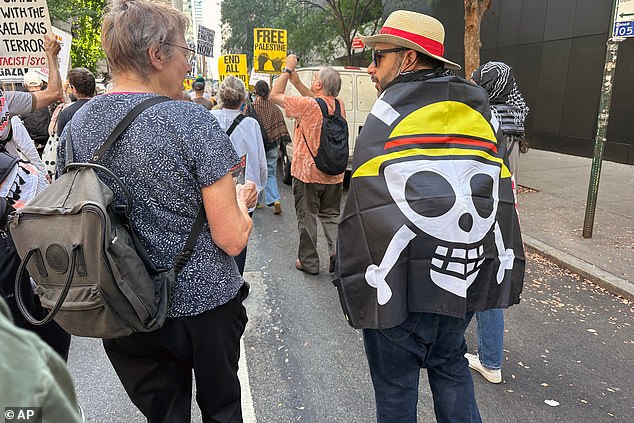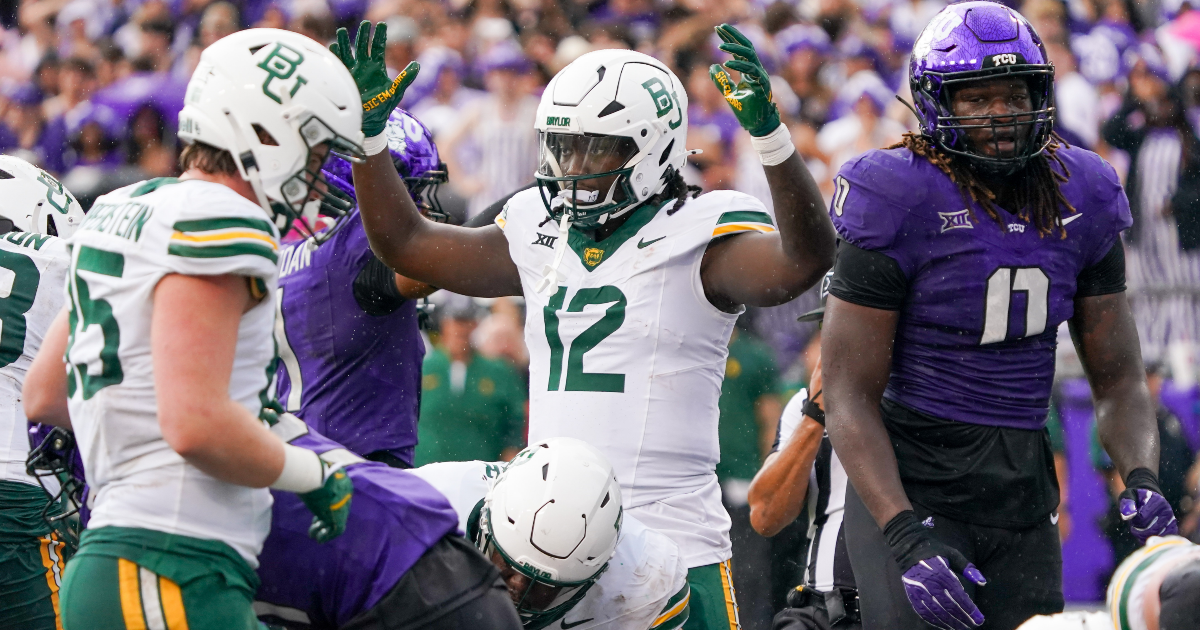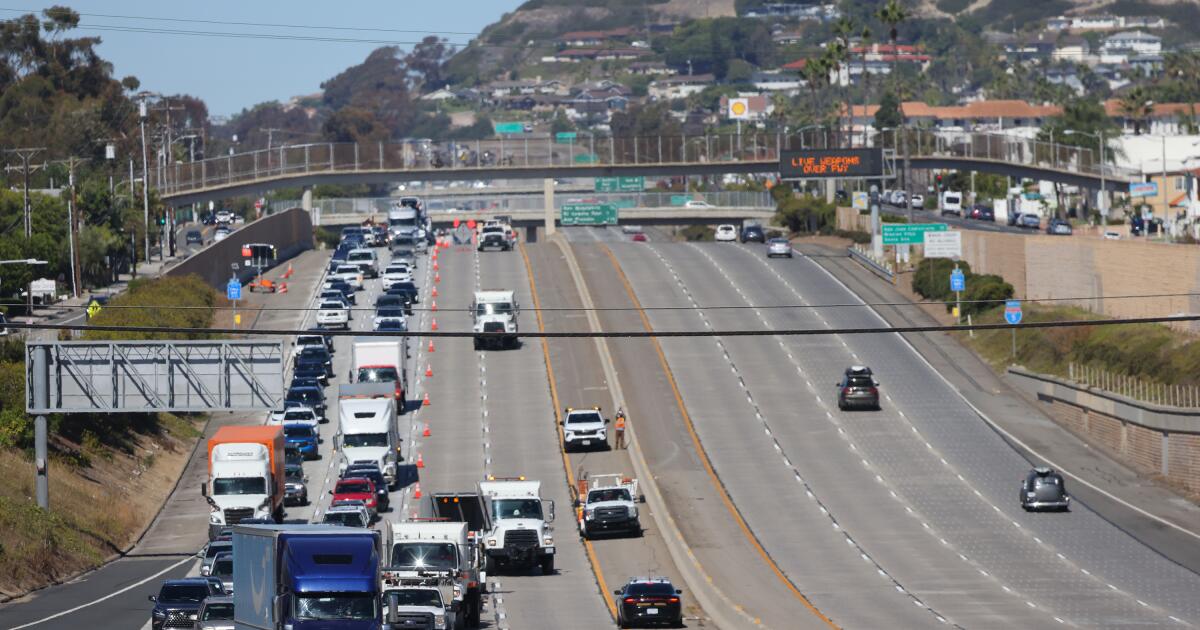It started as a harmless cartoon. Now it’s a warning.
A smiling skull with a straw hat — once the cheerful emblem of a pirate crew from the Japanese comic One Piece — has become a banner of rebellion across the world.
Now it’s heading straight for America.
The so-called One Piece flag first appeared at a pro-Palestinian protest in Indonesia in October 2023.
Within months, the same cutesy Jolly Roger began surfacing at demonstrations from Nepal to Madagascar — protests that have already helped bring down entire governments.
Today, it’s showing up closer to home.
The flag has been spotted at rallies against President Donald Trump’s immigration crackdown, pro-Palestinian marches in US cities, and even outside an Apple store during protests over alleged exploitation and genocide.
Online, it’s blowing up. On Reddit and X, users call it the next ‘Guy Fawkes mask’ — the new global symbol of youth defiance.
The One Piece banner has started appearing in the US, seen at this pro-Palestinian rally in New York City in September
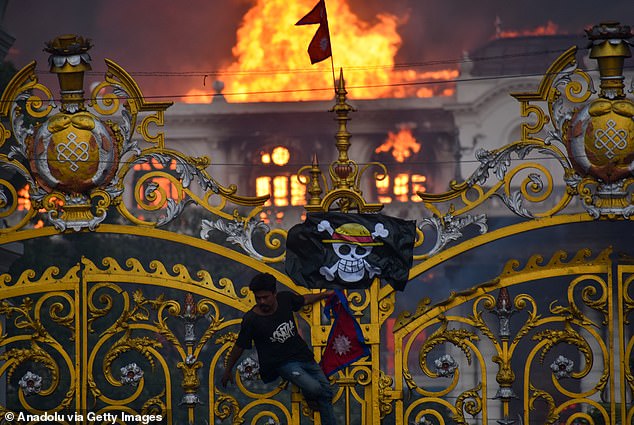
The Gen Z meme could be seen outside the burning seat of Nepal’s government during that country’s revolution
‘I’ve got a feeling this is only the beginning,’ one X user wrote this month.
‘The One Piece flag is quickly becoming a global symbol of rebellion and freedom for Gen Z, already appearing in 10 countries.’
They added: ‘It’s only a matter of time before it shows up in the UK and US.’
The pirate logo looks set to make an appearance at the roughly 2,600 No Kings rallies taking place across the US on Saturday, in a day of protest against the Trump administration.
A Reddit commentator put it bluntly: ‘I feel like it’s only a matter of time until some One Piece fans in America start waving it around in protest against Trump.’
Gen Z grew up with this manga. One Piece was created in 1997, right at the birth of Generation Z.
Tales about the motley crew of Straw Hat Pirates who defy corrupt rulers in search of freedom has sold more than 500million copies globally.
It’s spawned TV shows, movies, and a Netflix series.
The story follows the epic quest of Monkey D. Luffy, a young man with a rubber-like body seeking to become a pirate king by finding the legendary ‘One Piece’ treasure.
The crew’s logo — a grinning skull wearing a straw hat — was designed to be fun, even cute.
But for young people across Asia and Africa, it has come to mean something else: resistance, defiance, freedom from authority.
According to Reuters and NBC News, the flag first gained political traction in Indonesia, where protesters raised it at massive 2023 rallies in support of Gaza.
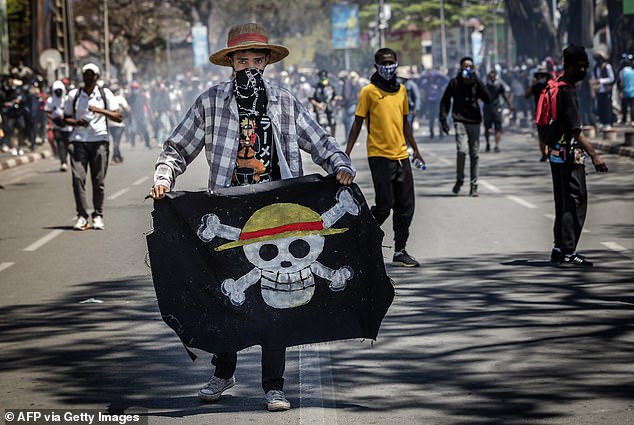
A protestor holds the Japanese anime symbol at a rally that ended with the resignation of Madagascar’s president
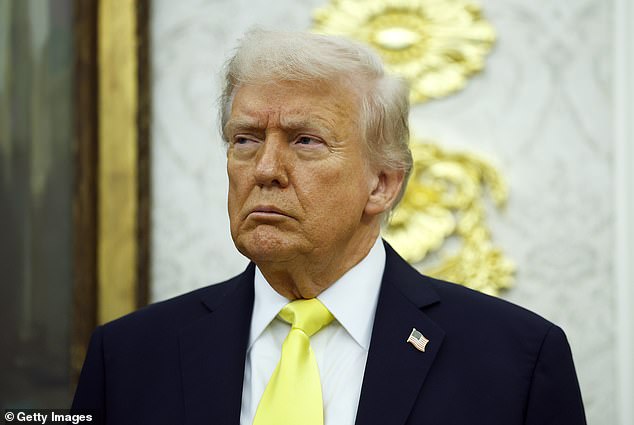
The symbol could be turned on President Trump, who is frequently decried as an authoritarian
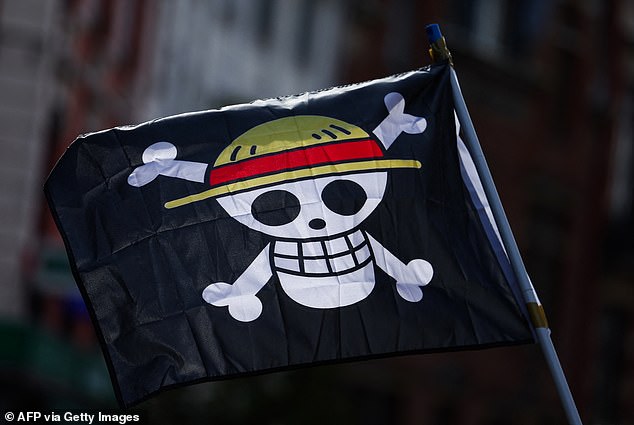
One Piece tells the story of a scrappy crew of pirates who defy corrupt rulers in search of freedom
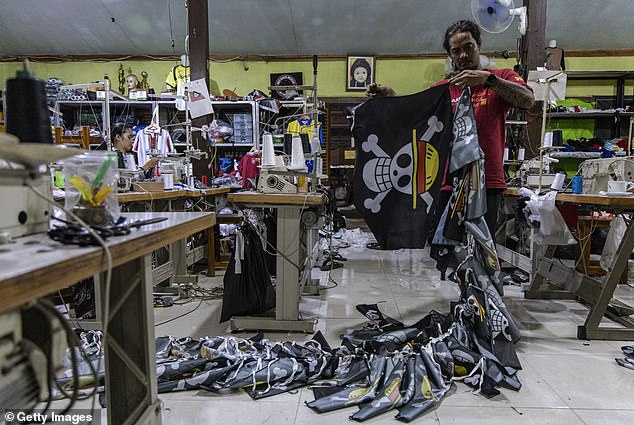
A T-shirt workshop knocking out orders for the anime Jolly Roger symbol in Central Java, Indonesia
Authorities dismissed it as childish at first, then tried to ban it when it spread online. That only made it more popular.
By 2025, the symbol appeared in Nepal, where youth-led demonstrations over corruption and internet censorship forced the prime minister to resign.
Protesters painted the straw hat skull on walls and rooftops across Kathmandu.
Then came Madagascar. In September, what began as marches over chronic power cuts spiraled into a national revolt.
Thousands of protesters — many teenagers — waved the same cartoon pirate flag.
‘It is so inspiring for young people,’ a 25-year-old protestor there told NPR.
‘In the story of One Piece there is injustice, there is corruption, the government is thinking themselves to be untouchable, but it can be touched by the power of the people.’
Within weeks, soldiers joined the demonstrators. The president fled the country. The military took control.
It was one of the fastest collapses of a government in modern African history.
And floating over the capital during those days was the same smiling skull from a comic book.
Experts say the One Piece flag’s rise is no accident.
Gen Z communicates through memes, symbols, and images.
They speak in shared cultural references — and few are bigger than One Piece, one of the most popular manga in history, with hundreds of millions of fans worldwide.
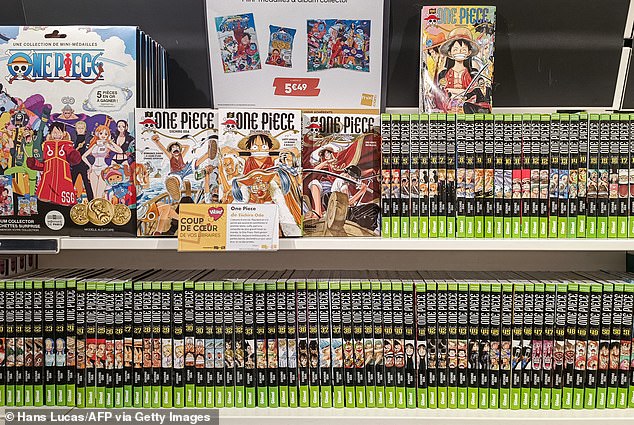
One Piece was created in 1997 and has sold more than 500 million copies globally.
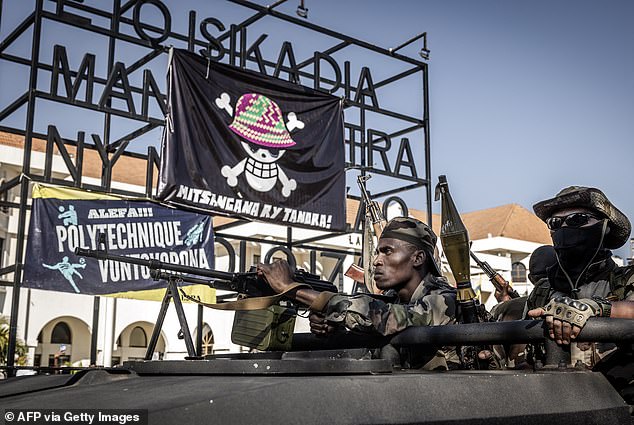
Madagascan troops ride past a large banner featuring a Malagasy version of the logo from the popular Japanese manga One Piece
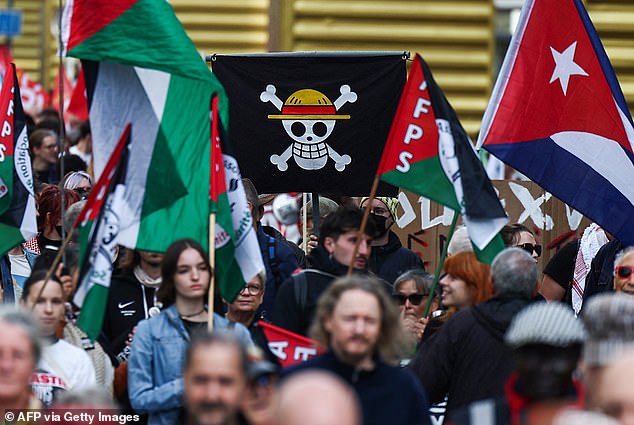
Protestors hold One Piece and other flags during a social justice rally in Lille, northern France
That gives the flag enormous reach.
University of Missouri professor Matt Frierdich said the symbol shows young people a course from helplessness to action.
‘Young people are comfortable meme-ifying things like that,’ Frierdich told The Maneater.
Much like the Guy Fawkes mask from V for Vendetta or the three-finger salute from The Hunger Games, the One Piece skull has transformed from fandom symbol to political weapon.
It offers anonymity and identity all at once — a shared logo for movements without leaders.
Nuurrianti Jalli, from Oklahoma State University, said the flag shows how Gen Z is ‘reshaping the cultural vocabulary of dissent’.
Now, the trend is crossing oceans.
Images of the flag have been seen at small rallies in New York, Los Angeles, and Austin — mostly among young protesters against border detentions and Gaza policy.
Federal officials have not commented publicly, but law enforcement analysts may well be tracking the flag’s appearance in online protest networks — as is the case with Antifa and far-right symbols.
The fear in Washington is simple: what happened in Madagascar could happen elsewhere.
That is, an amorphous, youth-driven protest movement could spread rapidly under one meme, without clear organization or demands — impossible to negotiate with, impossible to contain.
To older observers, it’s baffling. To young people, it’s natural.
One Indonesian activist described it best: ‘It’s not about pirates. It’s about freedom.’
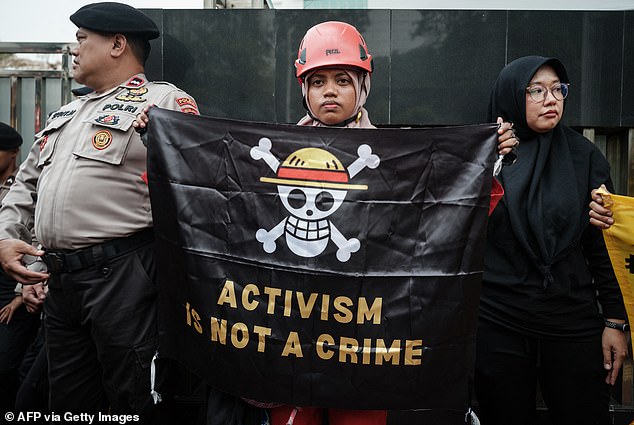
A member of Greenpeace Indonesia holds the pirate flag in a protest against a coastal development
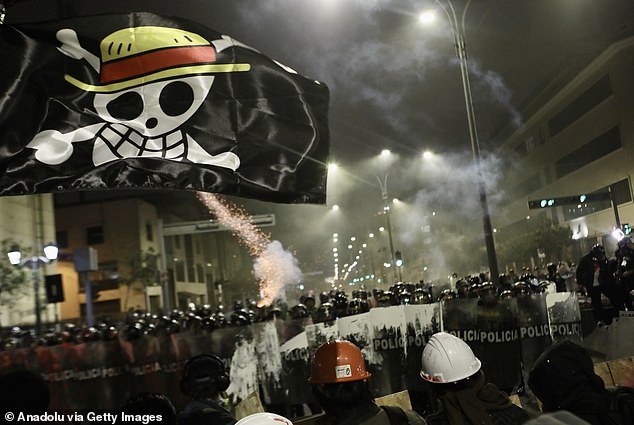
Mostly Gen Z demonstrators clash with members of Peruvian police during national protest in in Lima, Peru
For President Trump, who thrives on visual power — red hats, giant rallies, slogans — the arrival of a new flag of rebellion could be unwelcome.
The straw hat skull is apolitical on its surface, but anti-authoritarian at its core.
It could easily become the backdrop for anti-Trump youth protests — especially if his administration clamps down harder on immigration, free speech, or student rights.
Trump’s critics have already used pop culture symbols before.
The women’s marches used the pink ‘pussyhat.’ Environmental activists waved the Extinction Rebellion logo.
But the One Piece flag is different — decentralized, borderless, unpredictable.
It’s not a campaign logo. It’s a vibe. That makes it harder to dismiss.
Imagine it spreading across campuses and TikTok feeds, surfacing at protests over climate, Gaza, or abortion rights.
No single group owns it. No one can stop it.
And as every government from Kathmandu to Antananarivo has learned — banning it only fuels its mystique.
First Appeared on
Source link









